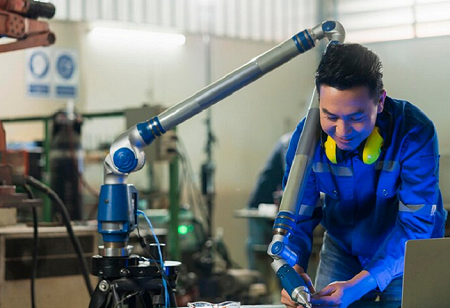
Anticipating Donald Trump would charge high tariffs on Beijing if he becomes the US President; companies have now begun to move their factories to Southeast Asia from China. This would be a move that is set to augment with his election win, stated industrial developers in the region. After winning the elections, Trump has threatened sixty per cent tariffs on the goods that are arriving from China to the United States. This is much higher than the levies of 7.5% to 25% that was imposed by him in his first term. It is one of the major risks for the world’s second-largest economy.
“As Trump geared up his campaign to retake the presidency earlier this year, calls from Chinese customers flooded WHA Group, one of Thailand's largest industrial estate developers,” said CEO Jareeporn Jarukornsakul. "There was (already) relocation to Southeast Asia, but this round is going to be more intense," she said, referring to Trump's 2017-2021 first term.
“Of the 90 factories that have opened this year in industrial parks run across Southeast Asia by Thailand's Amata Corp, some two-thirds have been companies relocating facilities from China,” said Vikrom Kromadit, the developer's founder and chairman.
Over the recent years, the global manufacturing sector is experiencing profound shifts with the production moving to Southeast Asia from China at a rapid rate. While economic factors have always influenced manufacturing decisions, political dynamics, specifically under the presidency of Donald Trump, accelerated this trend. As companies today are rethinking their dependence on China, they are reconfiguring their supply chains for managing risks as well as tap into new opportunities. While the trade policies of Trump augmented the shift, additional factors have also contributed to the appeal of Southeast Asia. Now let us look at some of the factors that drive the shift from China to Southeast Asia.
Increasing wages in China have alleviated the cost advantages which originally made China attractive for labor-intense manufacturing. Vietnam, Cambodia & Indonesia – the Southeast Asian countries provide lower labor costs, which allow enterprises to maintain competitive pricing. They also offer access to a young as well as growing workforce which supports large-scale manufacturing operations. As a consequence, relocating manufacturing facilities to Southeast Asian countries facilitates enterprises to achieve cost savings as well as allocate resources even more effectively.
The Southeast Asian countries are geographically close to China which makes it easy for manufacturing firms to shift part of their supply chains to neighboring nations without any major logical disruptions. Several Southeast Asian countries have enhanced infrastructure, which includes airports, road systems & ports although gaps remain compared to China. Key nations which include Thailand & Vietnam are capable of supporting complex manufacturing and export demands which makes the region as one of the strategic choices for enterprises that look for access to supply chains without any large-scale logistical disruptions.
The consumer base of Southeast Asia is expanding with rapid economic growth which in turn is creating new demand for a wide range of goods. Therefore, establishing manufacturing facilities in these regions will not only facilitate firms to meet local demand more effectively but also reduce shipping times and costs as well. Philippines, Vietnam and Indonesia have seen rapid surge in disposable income which increases the demand for consumer goods, electronics and various other goods. Companies can streamline distribution, tailor their products for meeting the preference of Southeast Asian consumers by manufacturing closer to these emerging markets.
The Southeast Asian countries are part of numerous regional trade agreements. These include the Comprehensive and Progressive Agreement for Trans-Pacific Partnership (CPTPP) and the Regional Comprehensive Economic Partnership (RCEP). These agreements not only facilitate in decreasing trade barriers but also help in increasing the appeal of manufacturing in the Southeast Asian countries.
Southeast Asian countries are set to play an increasingly important role in global manufacturing as enterprises continue to reconfigure their supply chains. This shift promises economic growth, technology development as well as job creation. However, it also presents new challenges in the regulatory compliance, infrastructure & environmental sustainability. For enterprises, communities as well as policymakers, understanding & adapting to these dynamics will be highly crucial for realizing the complete potential of this new manufacturing landscape.
We use cookies to ensure you get the best experience on our website. Read more...